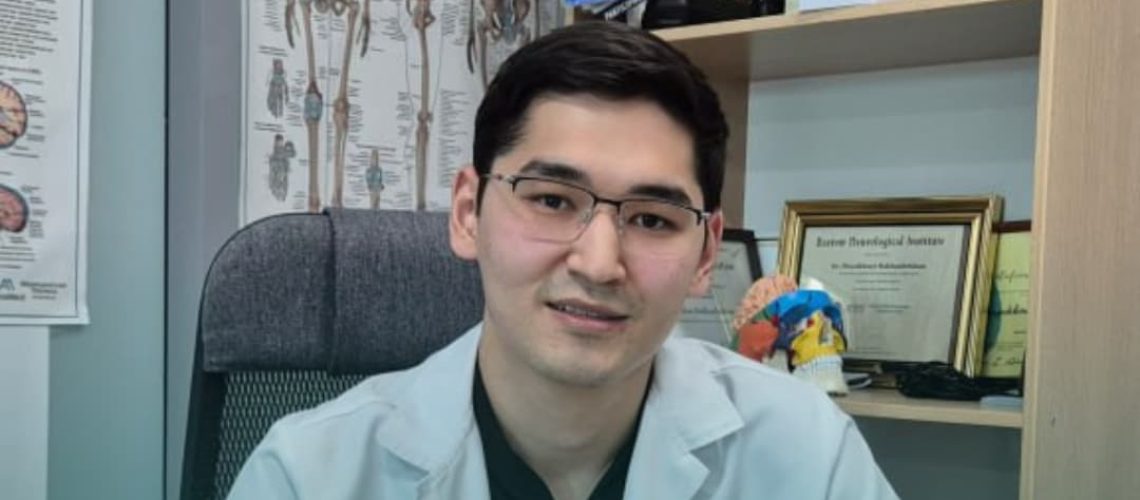More than 1000 operations on the brain, spinal cord, peripheral nervous system are performed annually at the National Hospital. On World Neurosurgeon Day, Shayakhmet Mahanbethan, Master of Health, Neurosurgeon of the Neurosurgery Department of the Clinic, spoke about the peculiarities of the profession and what pathologies have to be dealt with:
– The capabilities of our hospital allow you to perform unique operations. We eliminate vascular pathologies, remove tumors of the brain and spinal cord, operate on hernias, spinal stenoses, carry out an installation for stimulating nerves and certain areas of the brain, including epilepsy and Parkinson’s, and eliminate the consequences of traumatic brain injuries.
The profession of a neurosurgeon is incredibly complex and in great demand in the world. At least 11 years old need to learn. Plus, we constantly take master classes, internships, courses…
– There are more men among neurosurgeons. Is this related to the specifics of operations?
– Young doctors come to study with us from the regions, there are women among them, they do an excellent job. Yes, certain areas of neurosurgery during surgery require physical strength, for example, on the spine.
– The longest operation in your practice…
-… lasted about 13 hours. A large team of doctors cleaned the patient’s brain tumor located at the base of the skull.
-You recently went to Japan for an internship. What surprised you and what awaits this area of medicine in the future?
– According to my observations, there are more and more patients with vascular and spinal pathologies. Therefore, endoscopic elimination of spinal hernia is actively developing in the world so that patients are in the hospital as few beds as possible. In Japan, there are a maximum of 2-3 days. Improving minimally invasive operations, robotic techniques, can help more patients. They have the future.
Neurosurgeons at the national hospital also widely use endoscopic methods. So, after removing a hernia of the spine, our patient can get out of bed and walk in a few hours. Unfortunately, many Kazakhstanis prefer to turn to healers, “bone painters” without special education, and then end up on the operating table with serious complications.




